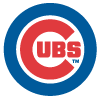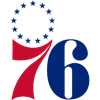With just two weeks remaining in the fantasy season, unearthing a hidden gem in the pile of rocks known as your waiver wire is more of an exercise in futility than anything else. Sure, there might be some random youngster like Jake Odorizzi available, but for the most part, the pickin's are pretty slim. Streaming pitchers might be a popular strategy at this time, but there's always serious risk involved as the pitchers from which you have to choose are flawed in a variety of ways. Let's face it, if they were that good and worthy of a start at the most crucial time of the year, they wouldn't be sitting out there on waivers, would they?
So rather than attempt to make some veteran shlub with a 5.04 ERA look like a worthwhile choice because he pitches well on even numbered days in odd numbered months, I'll leave the streaming choices to you and take this opportunity to look ahead to 2013. It's never too early to start prepping for next season, and scouting potential breakout pitchers is always a good place to start. It's always the deepest position, filled with a mix of hot, new youngsters and crafty low-budget veterans, but if you can build the core of your rotation around a select few young, potential breakouts, you might not even have to worry about streaming at year's end. One of the pitching groups I like to start with are the third-year starters.
Just as there is the
With just two weeks remaining in the fantasy season, unearthing a hidden gem in the pile of rocks known as your waiver wire is more of an exercise in futility than anything else. Sure, there might be some random youngster like Jake Odorizzi available, but for the most part, the pickin's are pretty slim. Streaming pitchers might be a popular strategy at this time, but there's always serious risk involved as the pitchers from which you have to choose are flawed in a variety of ways. Let's face it, if they were that good and worthy of a start at the most crucial time of the year, they wouldn't be sitting out there on waivers, would they?
So rather than attempt to make some veteran shlub with a 5.04 ERA look like a worthwhile choice because he pitches well on even numbered days in odd numbered months, I'll leave the streaming choices to you and take this opportunity to look ahead to 2013. It's never too early to start prepping for next season, and scouting potential breakout pitchers is always a good place to start. It's always the deepest position, filled with a mix of hot, new youngsters and crafty low-budget veterans, but if you can build the core of your rotation around a select few young, potential breakouts, you might not even have to worry about streaming at year's end. One of the pitching groups I like to start with are the third-year starters.
Just as there is the myth of the 27-year-old breakout, there is a similar notion that the third-year starter is the one due for a breakout year. He spends his rookie year learning the ropes and adjusting to life in the major leagues. His sophomore season is spent honing his skills and making the necessary adjustments to be a successful starter at this level. And finally, in his third year, he incorporates it all and delivers the goods. You look for areas of improvement like strikeout rates, K:BB ratios and specific batted ball data and then examine the pitcher as a person - maturity and character are always important. If all checks out and you don't see much in the way of potential red flags, you make your move.
It seems plausible enough, though the empirical evidence to either prove or debunk this theory remains, more or less, inconclusive. In 2011, it didn't seem to happen for Randy Wells or J.A. Happ, but things sure panned out for Ricky Romero and Jeff Niemann. This season, it failed to click for Jhoulys Chacin, but it most certainly did for Jonathon Niese. Overall talent obviously plays an important factor, but situation and circumstances do as well.
So with that, let's look at a few starting pitchers who may have looked like they took a step back in their development this season, but are actually primed to take their games to the next level in their third full year and become even more valuable fantasy commodities in 2013.
Jeremy Hellickson, TB - The 25-year-old right-hander enjoyed a tremendous rookie season in 2011, posting a 13-10 record with a 2.95 ERA and 117 strikeouts over 189 innings. Although he arrived with a decent amount of hype, Hellickson failed to deliver on certain expectations, primarily a disappointing 5.57 K/9IP that was almost half what it was during his time in the minors. On top of that, he seemed to get a substantial amount of help from both his ballpark dimensions and defense as he posted a 4.44 FIP, which didn't make him look like the most trustworthy pitcher. But during his second season, Hellickson made progress. His strikeout rate increased, his walk rate dropped and though his ERA rose to 3.31, there were other indications that improvement was on the horizon. Most notably was an increased groundball rate as Hellickson pitched to more contact. He trusted his stuff more, dared hitters to beat him, and now, additional improvements in 2013 seem possible. The difference between his ERA and FIP was much less than the year before, indicating the results were more about his adjustments than his surroundings or his teammates. Pitching to more contact can cause your ERA to rise initially, but with additional experience and knowledge of hitters, he will also know when to pitch away from them. His strikeout rate should continue to increase, his walks will perhaps decrease and we should see a drop in both ERA and FIP next year.
Ivan Nova, NYY - The Yankees hoped they had a budding star in their midst when Nova joined the rotation in 2011. He tallied 16 wins and finished the season with a respectable 3.70 ERA. His K/9IP was only 5.33, but he had a respectable walk rate and threw a nasty slider that made him one of the tougher groundball pitchers to face. During his second year, though, not only did he see his groundball rate drop, but he ended up posting a 4.85 ERA. He would have been easy to dismiss as a one-year wonder, but if you noticed his inflated .329 BABIP and his reduced 4.51 FIP, you would understand there was a certain amount of bad luck involved. Meanwhile, though, he missed a ton of bats as his swinging-strike percentage jumped from 6.6 percent in 2011 to 8.9 percent in 2012, helping his K/9IP climb to 8.10 and all the while dropping his walk rate to just less than league average. While you can't exactly count on luck changing, Nova should see improvements all around if he just maintains his current peripherals. With a strong groundball rate and a jump in strikeouts, he's going to be a difficult pitcher to beat.
Vance Worley, PHI - When Worley made his debut at 23, it looked as if the Phillies had yet another stud ace for their already fearsome rotation. Over 131.2 innings, Worley posted a 3.07 ERA with 119 strikeouts to just 46 walks. He pitched to a significant amount of contact, induced more groundballs than fly balls and did a fantastic job of keeping the ball in the park with a home built like a bandbox. This season, though, Worley saw his ERA jump by more than a full point (4.20) and watched his strikeout rate dip from a 8.13 K/9IP to just 7.23. However, he managed to maintain a similar walk rate and, just like Nova, was actually victimized by a .340 BABIP. Worley also induced a lot more groundballs this year (46.0 percent), and looking at his 3.86 FIP it's obvious his defense let him down. His defense spikes the BABIP, which in turn spikes the ERA. With an improved groundball rate, better health for the regular Phillies infielders and a little less bad luck, Worley stands to improve his numbers for the most part. Because he's pounding the strike zone and allowing hitters to take their best hacks, he may not see a rise in strikeouts, but so long as he continues down this same path, the numbers that matter most to fantasy owners should find their way to improvement.
Howard Bender has covered fantasy sports for more than 10 years on a variety of web sites. Follow @rotobuzzguy on Twitter or for questions, thoughts or comments, email him at rotobuzzguy@gmail.com or post a comment below.
Dave Regan returns next week to Mound Musings.




































